Here I use an old 4.5x6cm or 6x9cm roll film camera mounted on a horizontal slide and rail or directly on a tripod. I take two photos of each subject, one for each eye, with the camera shifted in between for the distance of the eyes, the so-called stereo base. For landscape subjects, one gets much more impressive results when shifting more than the usual 2-3 inches. I use stereo bases of up to a meter, depending on the subject. On the other hand, in the macro distance range a smaller stereo base is needed to get useful results.
Three examples follow:
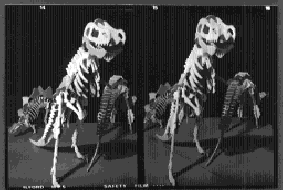
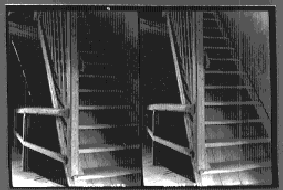

This is a really cheap stereo camera, an all plastic construction made in far east. It uses 35mm film and a mirror construction to project the two half images for left and right on one 24x36mm negative. This has the advantage that no special handling is necessary, usual processing of the negative film will yield directly viewable stereo prints. Another advantage of the stereo camera over the method listed above is the fact that both halves of the image are taken simultaneously which allows shooting moving subjects, while the above method is limited to strictly static motives.
Image quality of the Loreo is rather poor, but what will you expect from a $20 product...
Three examples follow:
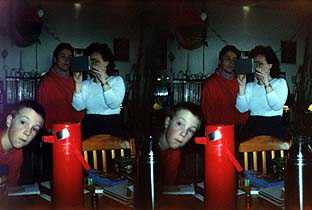
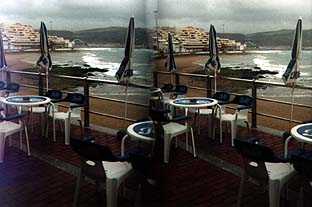
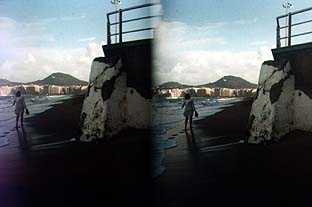
Another possibility of experimenting with stereo images is to compute them on the computer.

(The example was scanned in from a print of an antique Interlisp-D computer.)

 since July 22, 1999.
since July 22, 1999.
